With his vibrant blue suit and eye-catching red legs, the Red-legged Honeycreeper is an unmistakable bird.
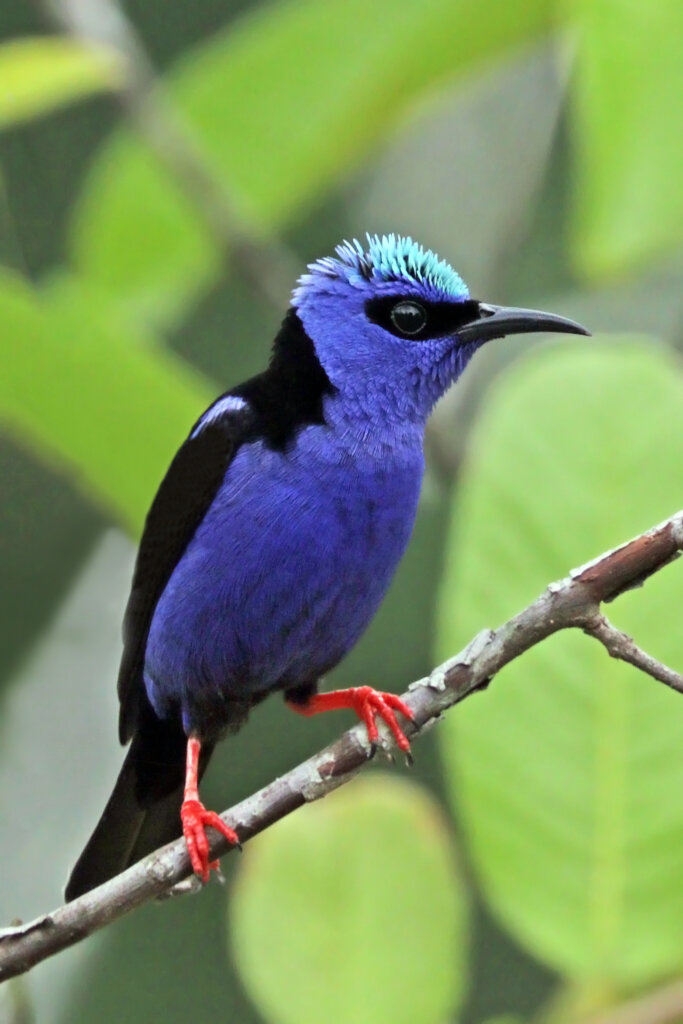
The red-legged honeycreeper, a member of the tanager family, is a charming little songbird. Its male counterpart is stunningly beautiful with a bright violet-blue color, complimented with a black mask around its eyes, wings, mantle, and tail. The crown boasts of a brilliant turquoise while the underwings are a shade of lemon yellow which is only visible when in flight. A notable feature of this bird is its strikingly red legs.
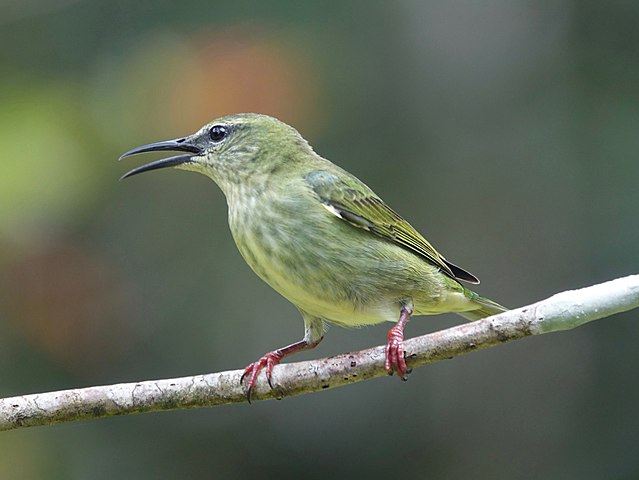
The upper feathers of the female bird appear to be a plain shade of green, while its underbelly has pale yellow color with some light green stripes. Additionally, the female bird has lemon-yellow feathers underneath its wings and a slightly curved beak like that of the male bird. In contrast, young male birds have physical features that are more similar to those of the female bird.

The Red-legged Honeycreeper is a bird species that can be found in various locations such as Mexico, Central America, lowland Colombia, and the Amazon and Orinoco Basins. Additionally, there is a group of these birds in eastern Brazil, and there is a possibility that they were introduced in Cuba.
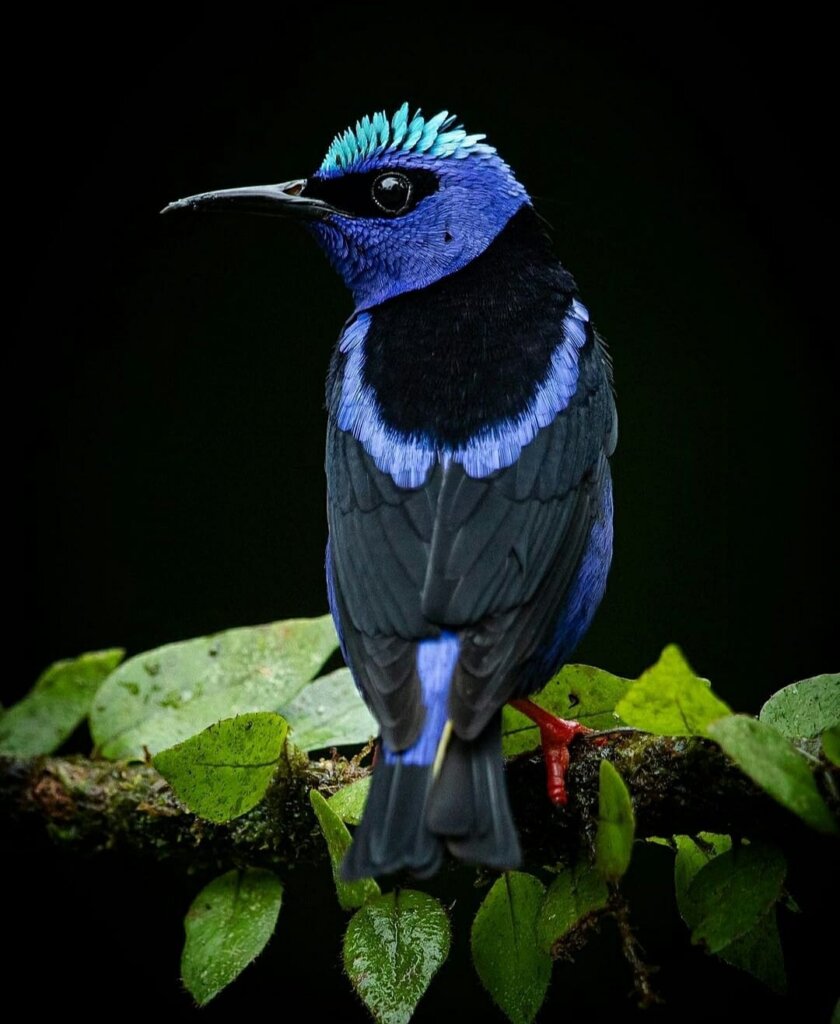
These feathered creatures thrive in the higher branches of forests and are often seen in groups of about 20. They also make appearances in forest outskirts, fields, and open areas with sporadic tree growth.
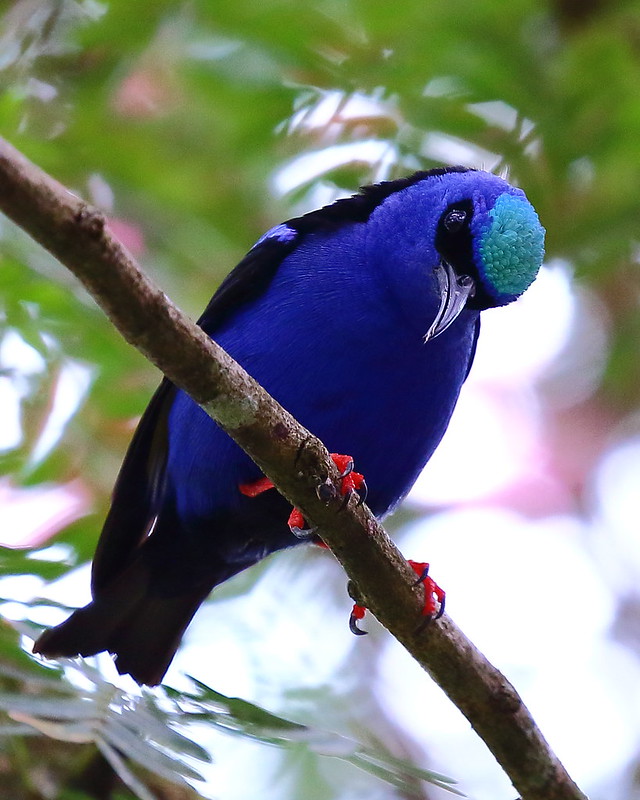
The red-legged honeycreepers have a diverse palate, and they enjoy feasting on various types of fruit, berries, and nectar from a range of flowers. Additionally, while they are searching through the leaves, they will also consume any insects they encounter.
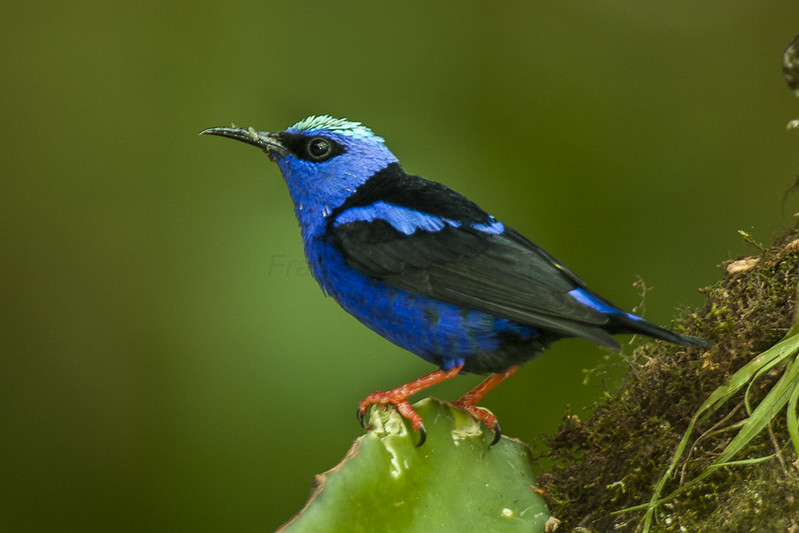
In Costa Rica, the breeding season of this particular species occurs between the months of April to June. The female bird constructs a cup-shaped nest using fibers and attaches it to supporting twigs with cobwebs. The nest is usually located about seven meters above ground level on a shrub or tree. Once built, two eggs are laid within the nest. The female bird then incubates the eggs for 12 to 13 days until they hatch. After hatching, both the female and her mate take turns to feed and brood the hatchlings. The chicks are fully fledged after 14 days.
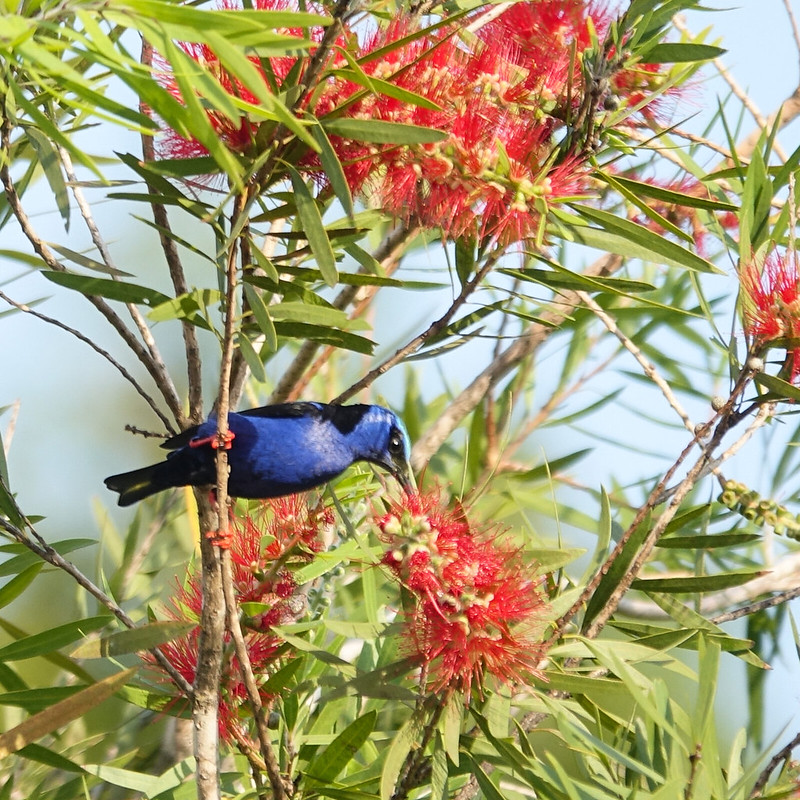
The actual number of Red-legged honeycreepers around the world is unknown, but they are considered to be abundant in various regions. As a result, they are not at risk of dwindling in numbers according to the IUCN Red List.
